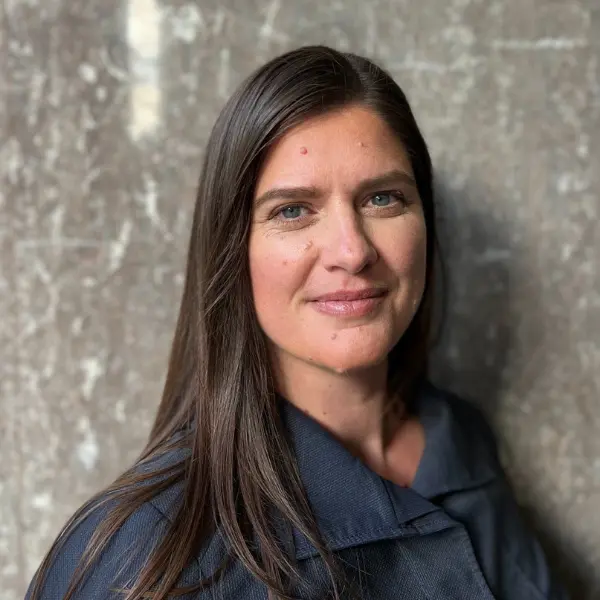Building a tool for the sector together: Co-creating as power sharing
Learn why co-creation as power sharing unlocks success and how Women Funding Network used this approach to build a new demographic data tool to help funders advance feminist philanthropy.

The Women’s Funding Network’s dashboard to be released at Unity Summit in late October, DataWoven, emerged directly from our members’ needs. Many women’s funds working to advance the leadership, power, and well-being of women, girls, and gender-expansive people rely on government data to guide their advocacy and grantmaking. But when it comes to demographic information on nonprofits, especially at the intersection of race and gender, there’s no publicly available data.
We already knew that just 1.9% of philanthropic dollars support organizations that center women and girls while only 0.5% supports organizations centering women, girls, and gender-expansive people of color. But these are national statistics, and place-based funders need to understand funding inequities in their communities and strategy areas. When Candid launched its Demographics via Candid Initiative in 2023 with 73,000 organizations sharing leadership, staff, and board demographics, the idea took shape for a publicly accessible tool to analyze funding decisions at the intersection of race and gender.
This work comes at a critical moment. As philanthropy leans into predictive analytics and AI-driven insights, gaps and biases in data can amplify inequities at scale. Building this dashboard is one way to ensure enabling intersectional analysis becomes standard practice. And feminist philanthropy’s values of power sharing, trust, transparency, reciprocity, and recognition have been integral to our project.
Co-creating as power sharing starts with project design
Creating a tool that explores decision-making power meant, in practice, making transparent tradeoffs and staying flexible. The first tradeoff was time. We could have built quickly based on what we thought mattered, but we knew the tool would be more useful to more people if we co-created with members, even if it took longer. Staff from 10 municipal, regional, and national women’s funds and Candid signed up for the cohort. As the project progressed, they stepped up to provide their expertise, including analysis, methodology, visualizations, user guides, calculations, design, and evaluation.
The second tradeoff was resourcing. A core tenet of feminist philanthropy is reciprocity, but initially we didn’t have the funds to compensate participants for their expertise. Instead, we offered value in other ways: Tableau training, recognition, and a community of practice. After the training, nine out of 10 participants chose to stay, meeting every two weeks for nine months. Later, with additional funding support, we were able to fund mini-grants and honoraria, putting our values more fully into practice.
Authentic participation means confronting limitations together
Research shows that projects fail when community members don’t share equal power in tradeoffs. So, it was important that the cohort understand the possibilities and limitations of both Tableau and the dataset so we could navigate tradeoffs together. In addition to training, our process included analysis discussion, wireframing, visualization, community input, and revision.
This power-sharing process was not without tension. In early sessions, I worried about not having all the answers, while cohort members felt uneasy learning a new tool in a group setting. We built trust by naming those anxieties and working through them together.
Some aspirations, like restructuring race/ethnicity into a multi-select option, weren’t feasible. However, our commitment to inclusion led us to devise a way for 126 write-in categories to be counted while also preserving the way people identified themselves.
Another constraint was that data on nonprofit leaders could be analyzed at the individual level, but staff and board demographics were only available in aggregate. So, we created scatter plot charts to map board and staff diversity that could be filtered by leader identity. This revealed a significant imbalance between communities who hold decision-making power on boards and those who carry out the work.
Because we had enough time and flexibility, we were able to bring what mattered to the cohort into the tool. Ultimately, the way we responded to limitations shaped not only the dashboard but the depth of findings it revealed.
The dashboard reveals intersectional patterns
By analyzing leadership through an intersectional lens, the dashboard reveals patterns hidden in aggregates. For example:
- Gender matters: White men are more likely than white women to lead legacy organizations with larger revenues, assets, and staff sizes.
- Race matters: Women of color lead fewer organizations than white women and are more often at the helm of newer, smaller ones.
- Scarcity is systemic: Nearly one-third of women of color-led organizations operate with under $50,000 annually. Grantmaking policies tied to revenue, staff size, organizational age, or data visibility perpetuate funding scarcity, leaving many without resources to grow.
Together, these findings show how identity, scale, and policy interact; where funder practices may be reinforcing inequity; and how large funding swings impact the people who lead and staff nonprofits.
The role of funders in co-creating as power sharing: resourcing participation differently
Creating the right conditions for this project depended not only on WFN and Candid but also on how funders chose to resource the process. As a funding partner, Pivotal, the group organizations founded by Melinda French Gates focused on social impact, offered thought partnership and resourcing, with care. They trusted our team to move through the process at the right pace. In the end, the project’s reach and success will depend on relationships.
Grounded in feminist philanthropy’s values, the dashboard demonstrates how co-creating as power sharing can be embedded in project design. I hope the dashboard invites funders to reflect, revise policies, and build strategies that advance equity.
Photo credit: Matthew Cavanaugh Photography LLC
About the authors
